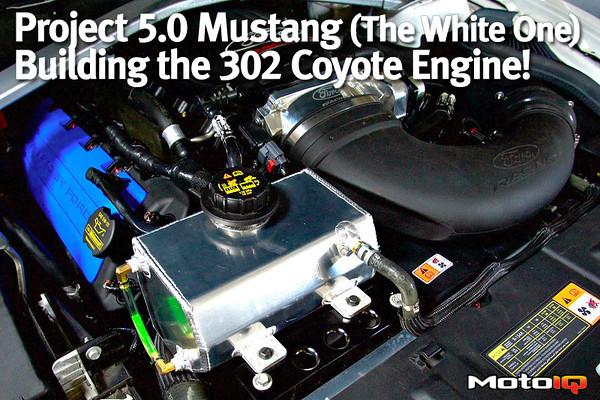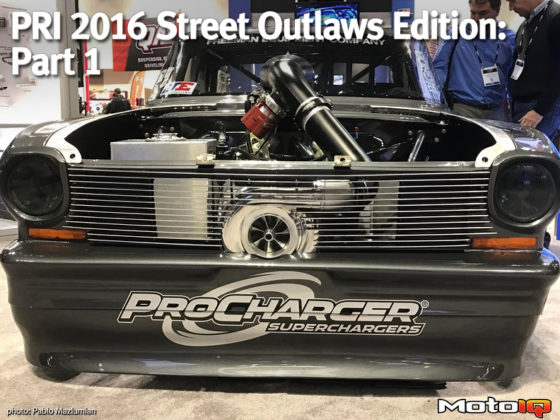We have been accumulating parts to build the Coyote 302 engine in our Mustang for awhile. Scheduling demands from the owner of the car have kept us from getting to taking the car down to do the motor, but we were finally able to get a time slot to do it.
We were eager to get into our motor and install the Ford Motorsports parts that would basically enable us to rev to over 8000 rpm reliably and breathe better on top. The parts we accumulated would bring us to a spec about the same as the Ford Motorsports Aluminator performance crate engine and a little bit more than the Drag Racing Cobra Jet NA engine.
Read more about Project Mustang!

The Coyote is interesting because it has a 90-degree V-angle, which is greater than your typical modern V-8. Ford chose to keep the 90 degree V for better NVH reasons when some other manufacturers run a tighter V-angle to build a more compact engine. A 90 degree V has better balance than tighter V angles.
The engine block and heads are all aluminum, and although the Coyote is lighter than the venerable 5.0 liter Windsor motor by about 20 lbs, it is still larger and slightly heavier than the Chevy LS, for example. Thanks to its free breathing, DOHC 4-valve per cylinder heads, the Coyote makes more power per cc of displacement than the LS.

Looking down the port, you can easily see nearly the entire intake valve. That is a straight shot, and it is no wonder why the ports flow so well. Our CNC-ported Ford Motorsports heads that we are going to install can top that number as well.

Howard measured the cylinder bores and the pistons to make sure the piston to wall clearances were ok. Since our engine is a low milage one, everything was fine, so he simply cleaned up the bores with a fine ball hone to help the new JE piston rings to seat.
Howard also measured the crank journals and the ID of the bearing bores with the bearings in placed and torqued. Since aluminum blocks grow a lot with heat, they require really tight main bearing clearances. This requires very precise fitment of the main bearings.

With everything honed, cleaned, and clearanced, Howard put the proper King XP main bearing halves into the block.




2 comments
“The Coyote is interesting because it has a 90 degree V-angle, which is greater than your typical modern V-8. Ford chose to keep the 90 degree V for better NVH reasons, when most other manufacturers like Chevy run a tighter V-angle to build a more compact engine.”
That is completely untrue. Do you know what a V-8 engine is?
No, it’s not, it is completely true! If you are going to troll, you need to be smarter.